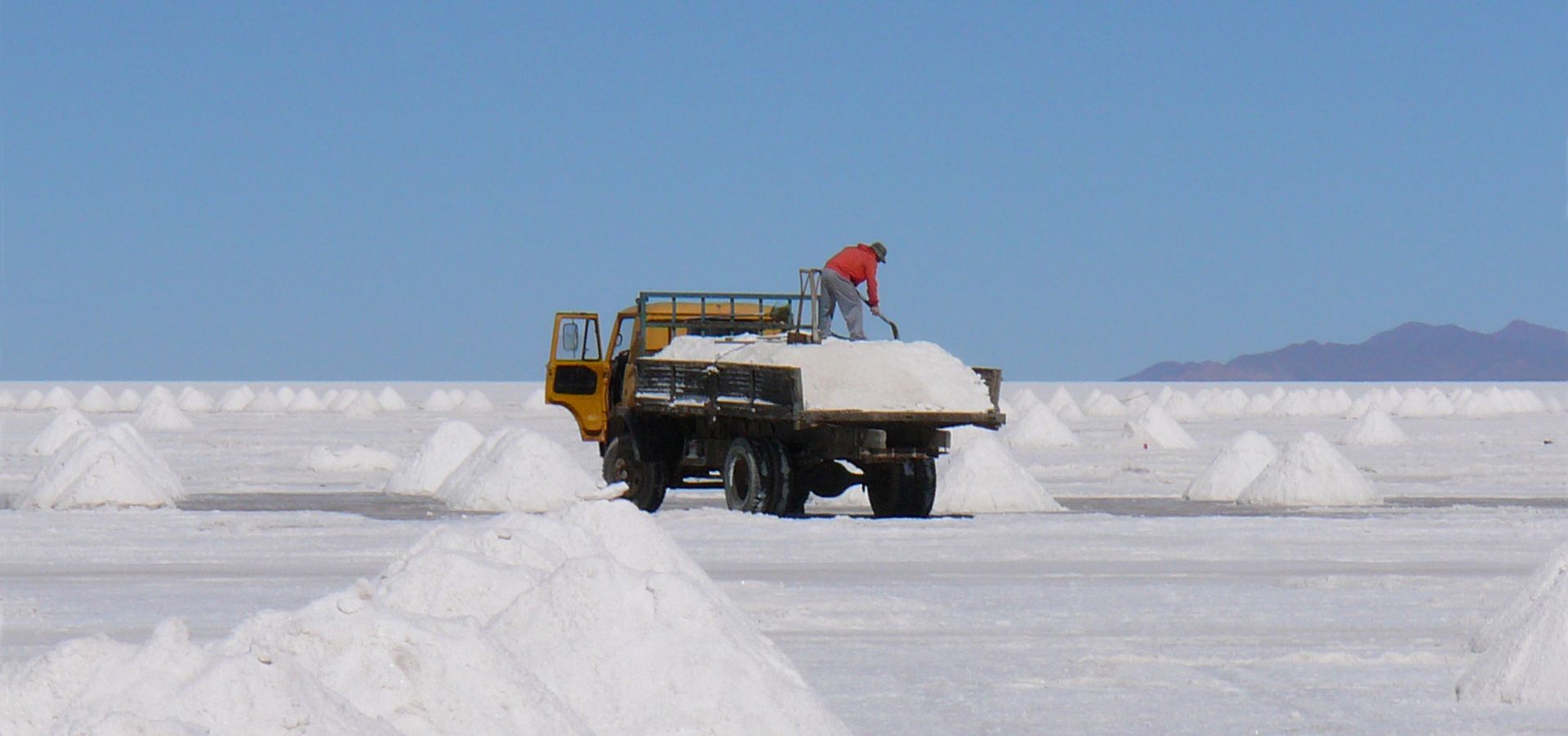Although Bolivia has some of the largest lithium reserves in the world, the country so far has not focused on extraction. Now that lithium is in high demand for electromobility and renewable technologies, Bolivia’s geopolitical role may change. Maximiliano Proaño takes a look.
Lithium is going to be in high demand in the next years from companies that produce batteries to power electric cars, laptops and other high-tech devices: some projections expect demand to increase as much as 650% by 2027.
Latin America will be crucial for this transition. Argentina, Chile and Bolivia are part of South America’s so-called “lithium triangle” which holds 54% of the world’s lithium resources. Chile has about 8.4 million tons of lithium reserves and processed 14,100 tons of the white metal in 2017, the second largest worldwide production after Australia. While an estimated 9 million tons of lithium sits untapped in the Argentina, it produced 5,500 million tons of the light metal in 2017. According to Reuters, lithium carbonate production in Argentina will triple by 2019.
In contrast, while Bolivia has one of the world’s largest reservoirs of this light metal, it has not so far developed large-scale production. In 2017, a pilot plant located in Uyuni produced close to 250 tons of lithium carbonate, less than 2% of Chilean production.
The country has a traumatic past of being exploited by foreign investors and not gaining from it, and mineral extraction has long been part of the Bolivian economy. The experience of mining exploitation is still an open wound: in the 17th century Spanish settlers forced natives and African slaves to extract the enormous reserves of silver in the city of Potosí.
Afterwards, early in 20th century, tin metal reserves were discovered. Tin was called the devil´s metal because the bad labour conditions: tin miners affected by silicosis often died before reaching 30 years of age. Then in the 1970s the gas era began, which contributed to political instability factor until Evo Morales reached power in 2006. Morales renationalized gas companies, and signed contracts with private companies where public company property always has at least 51% and raised taxes until 70%.
The geopolitics of lithium
Lithium has become a strategic resource for the global energy transition. Perhaps due to the history listed above, Bolivia has taken its time to react to the demand for lithium, but the Morales government understands that its reserves will play a geopolitical role.
In December 2018, Bolivia announced a $1.3 billion deal with German company ACI for extraction and the manufacturing and marketing of batteries. The joint venture aims to produce up to 40,000 tons of lithium hydroxide per year from 2022 over a period of 70 years. The agreement includes a 51% share of revenue for Bolivia, and build a manufacturing plant in the country.
With the joint venture, Bolivian state company YLB is teaming up with Germany’s privately-owned ACI Systems to develop its massive Uyuni salt flat and build a lithium hydroxide plant as well as a factory for electric vehicle batteries in Bolivia. The conditions seem to suit Bolivia’s desire to develop a more complex model than just a raw material extraction.
“Morales is trying to work with the global south, to show they’re sticking together,” said Dr Anna Revette, a sociologist and author of a study on lithium extraction and cultural politics in Bolivia. And indeed in July 2018, Bolivia signed a preferential trade agreement with India for use of its resources. In 2017, it exported its first shipment of lithium carbonate to China.
However, Juan Carlos Montenegro, general manager of state-owned Yacimientos de Litio Bolivianos (YLB) affirms “Bolivia will be a relevant actor in the global lithium market within four or five years”. Yacimientos de Litio Bolivianos (YLB) plans raise its production to 150,000 tons within five years. This would make Bolivia one of the top-producing nations and the source of about 20 per cent of the world’s lithium by 2022, according to Bloomberg NEF projections.
Some onlookers are skeptical. After all, there were previous agreements between Bolivia and Japan, Bolivia and South Korea, and Bolivia and France that never materialized. “I’d be surprised if this went forward, but it’s not impossible” said author Dr Anna Revette.
In my opinion, Latin American countries with an extractivism history dating back to colonial times have to explore new ways to manage their own natural resources. In this sense, Bolivian efforts to put together an entire production chain linked to lithium extraction could be a good example for the future of the region.

Good article. Check number on Argentina’s production.
“Argentina, Chile and Bolivia are part of South America’s so-called “lithium triangle” which holds 54% of the world’s lithium resources.” I think the writer means “proven reserves”. The distinction is vital. A “proven reserve” is what a mining company has spent the money to define to the satisfaction of mining securities regulators. This involves drilling extensively to delimit the ore body, and filing the paperwork to show it can be extracted economically with available technology. Mining companies see no point in doing this more than 20 or so years ahead.
There is no logical relationship between the totals of proven reserves and the resources that could probably be ultimately extracted, assuming historic improvement rates in technology. Humans have ben mining tin, considerably rarer in the Earth’s crust than lithium (1:10), for 5,000 years, and we are not running out of it.